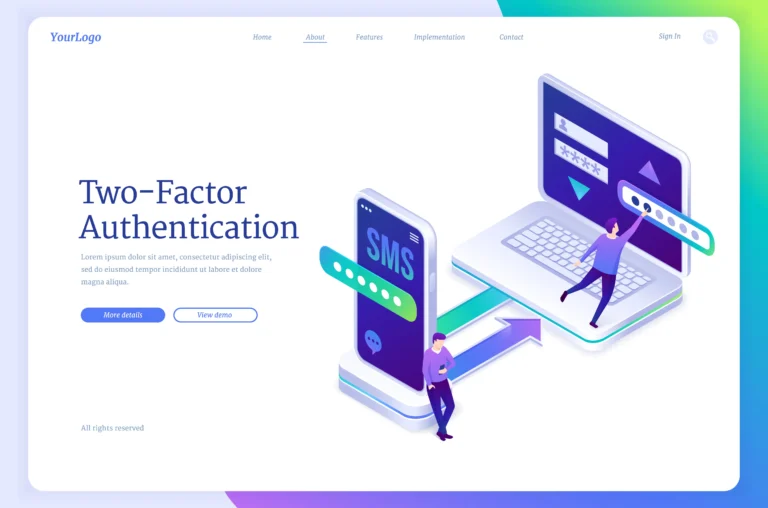10 Business Logic Vulnerabilities You Should Know About
Business logic vulnerabilities are defects in an application’s design and implementation that allow an attacker to elicit undesired behavior. This allows attackers to possibly use lawful functions to achieve a harmful objective. These defects are typically the consequence of failing to foresee uncommon application situations and, as a result, failing to securely manage them.
A person sells apparel items on his website, XYZ.com, to customers all over the world. You’ll see the following checkout interactions or stages:
- The user selects at least one item to include in the package.
- At that time, the client goes to the request page to begin a purchase.
- The customer will choose the checkout or installment option.
- Requests and client information will be sent by the proprietor to its payment partner for approval in installments. The company sends XYZ.com’s owner an exchange ID.
- On the client page, the proprietor will display tiny confirmation details.

Therefore, during the aforementioned working process, should we observe, we can conduct a financial attack against the owner of XYZ.com. In the third step, the aggressor has power over a cash-related post-request and can switch the sort of cash from rupees to dollars. As a result, the attacker had the chance to profit from this error in logic by reducing the cost of the request. Logic errors typically go unnoticed by people who aren’t fervently seeking them because they are typically not discovered through frequent use of the application. However, an attacker may be able to exploit social quirks by interacting with the application in ways that the creators would never anticipate.
Implementing the standards and constraints that were identified when creating the application or usefulness is one of the core purposes of business logic. In general, the business rules specify how the application should react when a specific circumstance arises. This includes discouraging customers from acting in a way that would harm the company or is generally unwise.
Logic errors could allow attackers to get around these rules. For instance, they could be able to complete an exchange without engaging in the anticipated buy work procedure. In some instances, incomplete or absent approval of the information provided by the client may allow the client to implement optional upgrades to exchange fundamental attributes or submit absurd information.
Logical errors can be highly diverse and can introduce new functionality to the application. Regularly identifying their calls for a certain level of human knowledge, such as an understanding of the business sector for any specific aims an attacker would have in a particular situation. They become challenging to detect with robotized weakness scanners as a result. Therefore, logical errors are a fantastic target for manual analyzers and bug abundance trackers as a whole.

What causes Business Logic Vulnerabilities?
The design and development teams’ incorrect assumptions about how users will interact with the application frequently result in business logic vulnerabilities. These incorrect assumptions may result in insufficient validation of user input. For instance, if programmers presume that users will only transmit data via a web browser, the application may solely rely on flimsy client-side controls to verify the input. An attacker can simply get around these by employing an intercepting proxy. In the end, this means that when an attacker departs from the intended user behavior, the program fails to take the necessary precautions to stop this and, as a result, fails to manage the issue safely.
Exceptionally complex systems that even the developer team itself can not fully comprehend frequently have logic faults. Developers must comprehend the program as a whole to avoid logical errors. This includes being conscious of the unexpected ways in which various functions can be integrated. Large code bases may prevent developers from fully comprehending how every aspect of the application functions. Someone working on one component could unintentionally introduce major logical errors by making incorrect assumptions about how another component functions.
Such flaws are simple to introduce into an application if the developers do not explicitly describe any assumptions that are being made.

What are the most business logic threat methods?
1. Privilege escalation and authentication issues
Access control lists (ACLs) and benefits are specific to applications. Validation is the component of the application associated with security that is the most fundamental. A verified customer approaches the interior layouts and pages that are hidden behind the login area. The data set, LDAP, document, and other components can maintain these advantages. The execution of approval could be weak, which could lead to flaws. There is a chance of abuse if these weaknesses are identified during a test. This double-dealing would likely involve accessing another client’s content or becoming a higher-level client with more privileges to cause more significant harm.
2. Access to unsecured information and changing crucial parameters.
When executed to the application, HTTP GET and POST requests typically have a few limitations. These boundaries may take the form of name/esteem sets, JSON, XML, and other formats. Strangely, these borders can also be played with and predicted. Data or content disclosure may result if the application’s business logic handles these restrictions before allowing them. Another common mistake in business logic, this one is simple to exploit.
3. The capture of cookies by developers and circumvention of business logic
An essential component of maintaining the state via HTTP is cookies. Engineers frequently construct information using meeting-only factors rather than using meeting-treats-only techniques. The program was given additional challenges by the application designers at key moments, which revealed honest gaps. Designers have two options to maintain these certificates across apps once confirmation logic sets a few limitations based on certifications.
The programmer can specify appropriate treats in the program or create boundaries in meeting factors. It’s possible to figure out application designers or translate their values if they’re passing treats. It may provide a logical opening or sidestep. It could create an opening or sidestep that might be logical. If an attacker is able to spot this opportunity, they can readily exploit it.
4. Identifying LDAP parameters and gaining access to vital infrastructure
In addition to being integrated with “single sign-on,” LDAP is becoming a crucial perspective for large applications. LDAP is used by many foundation layer tools, including SiteMinder and Load Balancer, for validation and approval. Business logic choice banners that are transmitted over LDAP borders may be treated improperly and used. On those boundaries, genuine infusions are made possible by the LDAP sifting being done at the business application layer. LDAP injection and business layer circumventions are possible if the application isn’t taking the proper permission processes.

5. Exploiting business constraints
The business logic of the application should have clearly defined guidelines and constraints that are extremely fundamental for an application. If an attacker chooses to ignore these criteria, they frequently end up being exploited. These business imperatives frequently place restrictions on client handles that have helpless planning or execution. Business logic can lead to simple disclosure and double-dealing if it prepares factors that are supposed to be kept secret.
A list of all the feasible different attributes and where they might be infused into the application can be made when it is being crawled and profiled. It is simple to read these hidden fields and understand their particular condition; but, control of this data might result in fundamental flaws in business logic if the setting is used to control the business rules.
6. The flow of business bypass
The software includes streams that are restricted by page movements and redirects. For instance, the program will direct the user to the cash move page following a successful login. A meeting treat or other system keeps track of the client’s meeting throughout these exchanges. This stream may typically be avoided, which may result in an error condition or data spillage. An attacker may find it easier to discern basic back-end data with the help of this spillage. It’s possible that this stream may be exploited in a variety of ways if it’s in charge and disseminating basic information.
7. Exploiting client-side JavaScript, Flash, or Silverlight business procedures
Currently, a large number of commercial apps are operating on rich web application (RIA) platforms that use Silverlight, Flash, and JavaScript. The consumer-side component is often where the logic is inserted. These components are definable. If it is written in Flash or Silverlight, these two documents can be disassembled to reveal the application’s true functionality. To identify introduced logic, the JavaScript-powered client-side program can be repaired line by line.
Any customer-side logic is incorporated into this to perform computations for cryptography, certification hoarding, leveraging the board, and other uses. When the consumer-side code is dissected, it often exposes attacks that result in more double-dealing.

8. The extraction of a user’s identity
Perhaps the most fundamental limitations in a valid application are those related to a client’s personality. Utilizing meetings or various token sorts, the personalities of the clients are kept up to date. These symbolic boundaries can be seen from the client side of the meeting by an aggressor because of poorly thought out and designed programs and they are occasionally not strictly adhered to on the worker side as well. An opportunity for abuse and widespread double-dealing is presented by this circumstance. A username that can be guessed or a token that uses just consecutive numbers.
9. Extraction of corporate information and access to files or illegal URLs
The components of business applications, the records that are traded, and the function itself all comprise basic data. Customers can exchange and download their information in the document format of their choice (PDF, XLS, or CSV). If this usefulness isn’t carefully implemented, it can encourage resource spillage. This information can be taken out of the application layer by an adversary. This is possibly the most common error, and it’s also quite easy to exploit. These materials can be downloaded directly from URLs or by making use of some internal restrictions.
10. Logic-based Denial of Services (DoS)
Denial of Service (DoS) flaws are costly for commercial applications since they stop the operation completely or for an extended period of time. Many factors, if not executed properly, can result in a DoS situation where the attacker can identify a flaw and try to take advantage of it. In some cases, the actual plan increases the likelihood of a DoS attack, whereas, in other instances, racial dynamics strengthen a DoS weakness. On systems administration at the application layer, there aren’t any all-encompassing DoS attacks like TCP flooding, but it depends on the parts and the applications. A DoS attack can occasionally be stopped by application layer loops that never end.

Preventing Business Logic Vulnerabilities
In a brief, the following steps can help you prevent business logic vulnerabilities:
- Make certain that testers and developers are familiar with the application’s target audience.
- Avoid assuming implicitly what users will do or how other program components will behave.
Determine what presumptions you have about the server-side state and put the required logic in place to check that they are true. Making sure that any input value is reasonable before continuing is part of this.
The ability of developers and testers to comprehend these presumptions and how the program is expected to behave in various instances is also crucial. This might aid the team in identifying logical errors as soon as possible. The development team should, to the greatest extent possible, use the following best practices to help with this:
- Keep accurate design documentation and data flows for all transactions and workflows, making note of any assumptions made along the way.
- Create as clear of a code as you can. If the intended outcome is unclear, it will be challenging to identify any logical errors. In a perfect world, documentation for well-written code wouldn’t be necessary. To make sure that other developers and testers are aware of the assumptions being made and the precise nature of the desired behavior in unavoidably complex circumstances, it is essential to produce detailed documentation.
- Take note of any citations to other pieces of code that each component utilizes. Consider any consequences that could arise from these dependencies if a bad actor were to influence them in an unusual way.







